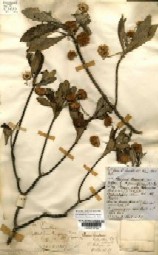UK Overseas Territories
- Home
- UK
Overseas Territories
- Biodiversity
- Threats
- Kew's historical links
- Ascension
- Anguilla
- Bermuda
- British Antarctic Territory
- British Indian Ocean Territory
- British Virgin Islands
- Cayman Islands
- Falkland Islands
- Gibraltar
- Montserrat
- Pitcairn Islands
- South Georgia
- Sovereign Base Areas on Cyprus
- St Helena
- Tristan da Cunha
- Turks and Caicos Islands
- Conservation activities
- Capacity Building
- Community involvement
- Links
- Contacts
UK Overseas Territories Programme

Kew and the UK Overseas Territories: historical links |
|
|
|
After its establishment as a botanic garden in
1759, Kew quickly began to acquire plants from Britain’s colonies
in the tropics and sub-tropics. Some 16 of the colonies, mostly
small island states, have maintained their strong links with the
UK and these have become the UK Overseas Territories. |
| Under the auspices of Sir William Hooker, Kew’s first official director from 1841, the Palm House was built to accommodate the ever-increasing collection of tropical plants. The Herbarium also continued to grow, with huge numbers of dried specimens arriving for describing and cataloguing from plant collecting expeditions throughout the British Empire. Sir William’s son, Joseph Hooker, travelled widely in search of plants. In the mid-nineteenth century, he joined the HMS Erebus on its voyage to the Antarctic. Whenever possible, he botanised at the ship’s ports of call, including in the Falklands and on St Helena and Ascension, all of which are now UK Overseas Territories. Throughout the nineteenth and early twentieth centuries, Kew provided advice on the introduction of economic plants into new areas worldwide. It also sent skilled staff abroad to manage botanical and horticultural stations in various places, including Montserrat, Bermuda and the British Virgin Islands. Kew’s role in the UKOTs has changed dramatically since the days of the British Empire. Through its projects and ongoing activities, the UKOTs Programme directly contributes to biodiversity conservation in the UK Overseas Territories and supports the implementation of the the Convention on Biological Diversity and the Global Strategy for Plant Conservation. All activities take place in collaboration with local partners and help to build local capacity. |
|
|
Find out more about: Convention on Biological
Diversity |


